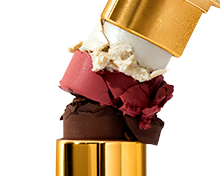What’s Up with Whaling?
Traced back to 3000 B.C, whaling is the practice of hunting and capturing whales for their meat and oil. Due to advancing hunting technology and a growing demand for sperm oil, the industry boomed. “By the late 1930’s, 50,000+ whales were being killed annually,” causing many species to become endangered [1]. Whales were on the path to extinction, and it was happening fast.
This sharp decline sparked numerous conservation movements including ‘GreenPeace’ and ‘Save the Whales’. Not only was there a need to end the inhumane treatment of these gracious mammals, but there was a better alternative. During this time, Jojoba oil was identified as an excellent substitute for whale oil.
Starting in 1971, Green Peace activists put themselves between whales and the harpoons of Russian whaling ships. Exposing the cruelties of the industry, the group gained momentum. Additional conservation groups sparked around the globe including ‘Save the Whales’.
With endless promotion of Jojoba and continuous exposure to the inhumane practices in the whaling industry, these conservation movements were making incredible progress. Although, there was still a lot to be done to reverse the harsh effects of commercial whaling. “At its height, the whaling industry contributed $10 million to GDP.” [4] With such a large fiscal dependence, the fight to protect these free-swimming beauties was a massive challenge.
Conservation methods to save the whales is known today as one of the “most successful conservation campaigns ever”, declared by the WWF. [3] The result of their hard work? In 1986, the International Whaling Commission put a hold on commercial whaling, still in effect today.

©Desert Whale Jojoba Co.
Hooked on Jojoba
Researchers at the University of Arizona found that “The unique structure of Jojoba oil, similar to the structure of sperm whale oil, offers special value…in a multitude of applications.” [2] Both are composed of wax esters, but Jojoba out-performs sperm oil in a variety of ways; “High oxidative stability, excellent lubricity, relatively constant viscosity at a wide range of temperatures, and good stability in high pressure processes.” [2] Jojoba oil not only replaces whale oil, but out-performs it.
Unfortunately, the only Jojoba plants were growing wild in nature. In order to spread application awareness, the International Conference of Jojoba and Its Uses was formed. This group connects all corners of the globe and calls upon a multitude of industries. Their work has led to wide spread commercial farming of Jojoba, now grown on thousands of acres all over the world. “The Jojoba Plant’s potential is becoming realized as our global industry and consumers demand ecofriendly raw materials and end products."[2]

Jojoba and Skincare
Today, Jojoba is widely valued in the skincare industry being known as sustainable and environmentally friendly.
By harvesting the seeds from the Jojoba Shrub and extracting the oil, the plant can continue to grow. 100% naturally and sustainably, no innocent animal or plant life is sacrificed in the process. Jojoba Oil “is widely regarded as the most eco-friendly and safe ingredients in cosmetic products.” [5]
Using sustainable and natural ingredients in cosmetics is growing in importance to consumers. Christine Fouts (PhD) and Anna Pavlovic(PhD) authors of ‘Journey from Saving Whales to Sustainable Chemistry’ stated, “The cosmetic industry is converting to plant-derived sustainable resources for production of cosmetic raw materials to meet consumer demand and regulatory pressures. The benefits derived from Jojoba oil as a renewable source of raw materials are many.” [2]
Containing wax esters similar to those found in human sebum, the demand for Jojoba Oil is rising in the cosmetic industry. Benefits of Jojoba for the skin include; long-lasting hydration, soothing, anti-aging, and non-acnegenic. With these proven benefits, Jojoba makes an incredible skincare secret.
Shop Organic Skincare with Jojoba

References:
1. "History of Whaling." Whale Facts. Marine Mammal Facts & Info, n.d. Web. 11 July 2017. http://www.whalefacts.org/history-of-whaling/.
2. Rohde, Soraya, Christine Fouts, Anna Pavlovic, Jordan Quinn, Chris Furman, and Jed Riemer. "Journey from Saving the Whales to Sustainable Chemistry." (2015): 27-32. Web.
3. "Saving the Whales." WWF Global. N.p., 11 Apr. 2017. Web. 11 July 2017 http://wwf.panda.org/?199987/Saving-the-whales.
4. Thompson, Derek. "The Spectacular Rise and Fall of U.S. Whaling: An Innovation Story." The Atlantic. N.p., 22 Feb. 2012. Web. 11 July 2017 https://www.theatlantic.com/business/archive/2012/02/the-spectacular-rise-and-fall-of-us-whaling-an-innovation-story/253355/.
5. "Using Jojoba Oil Helps Save Whales." The Jojoba Oil. N.p., n.d. Web. 11 July 2017 http://thejojobaoil.com/whales/.


